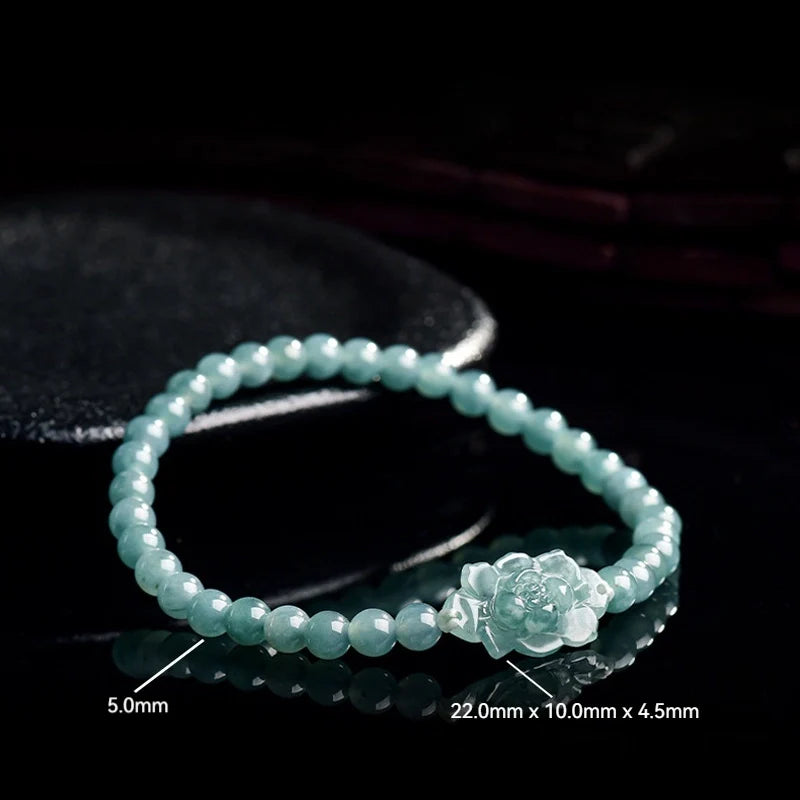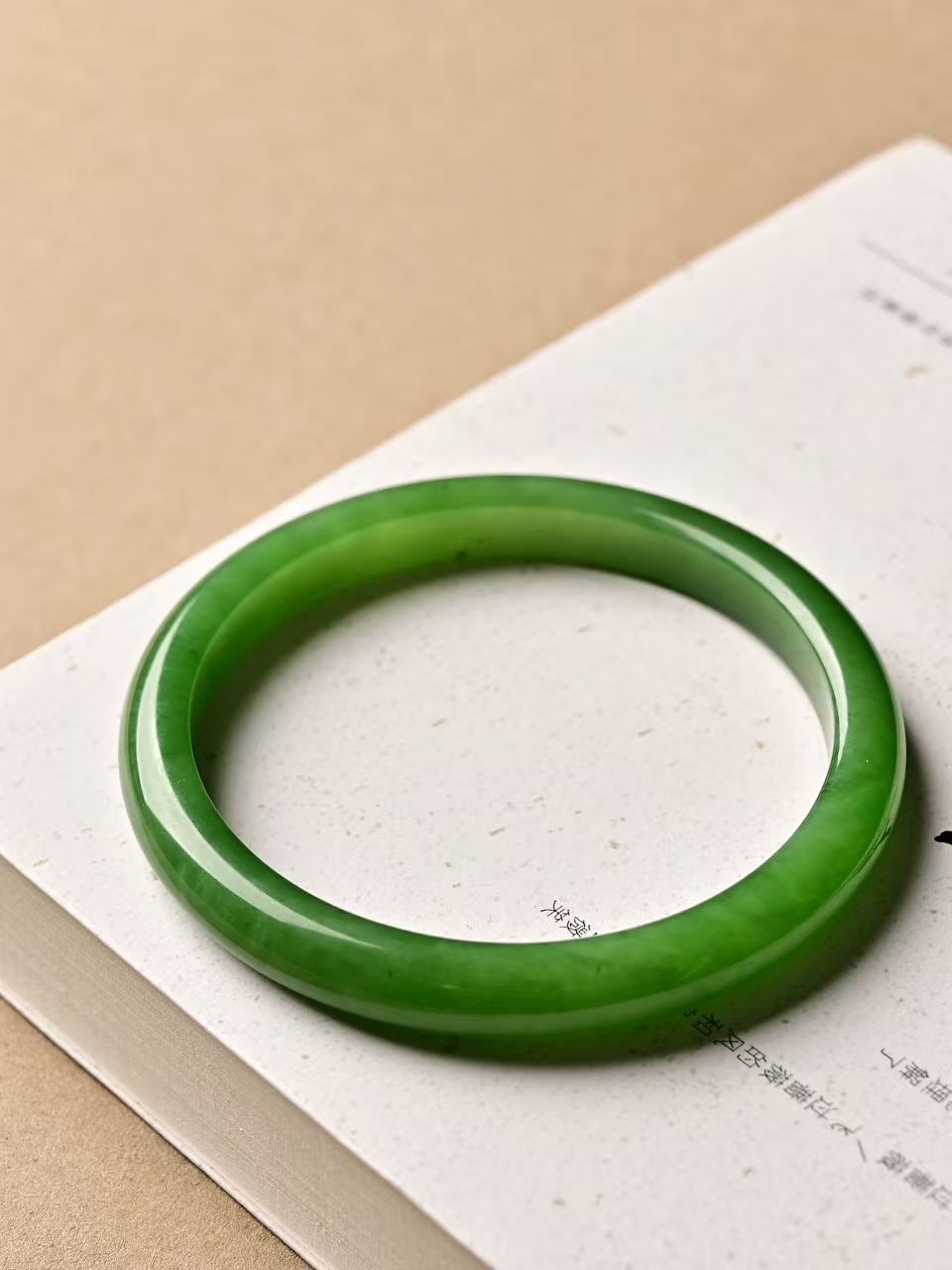How to Identify Genuine Natural Jadeite Bracelets: A Comprehensive Guide
Natural jadeite bracelets, prized for their beauty and cultural significance, are often imitated by counterfeiters. To avoid purchasing fake or treated pieces, mastering these practical identification techniques is essential. Below are three key methods to distinguish authentic jadeite from imitations.
Visual Inspection: Uncover Subtle Details
Observe the Luster and Surface Texture
Genuine natural jadeite (Type A) exhibits a sharp, glass-like luster with clear reflections. Under strong light, its surface appears smooth and polished, with no waxy or resinous residue. In contrast, B-grade jadeite, treated with acid and filled with resin, displays a dull, waxy sheen. Counterfeits like dyed quartz or glass may mimic jadeite’s color but lack its natural translucency and luster.

Examine Color Distribution and Roots
Authentic jadeite’s color is never uniform. High-quality pieces feature “color roots”—gradual transitions from deep to light hues, resembling tree roots spreading beneath the surface. For example, a green jadeite bracelet should show uneven green patches with natural blending into the base material. Fake jadeite often has overly vibrant, evenly distributed colors that appear painted on, lacking depth and texture.
Check for Internal Structures Under Light
Using a flashlight or natural light, tilt the bracelet to observe its internal composition. Genuine jadeite reveals fibrous or granular structures, known as “jade texture,” which scatter light uniquely. B-grade jadeite may show mesh-like acid-etch marks from treatment, while counterfeits like glass or resin lack these natural patterns entirely.
Tactile and Physical Tests: Feel the Difference
Touch and Temperature Sensitivity
Natural jadeite has excellent thermal conductivity, feeling cool to the touch initially. This coolness persists longer than synthetic materials, which warm up quickly. Gently rub the bracelet against your cheek—authentic jadeite will maintain a refreshing chill, while fakes like plastic or resin become lukewarm within seconds.
Weight and Density
Jadeite’s high density (3.33 g/cm³) makes it noticeably heavier than most imitations. Hold the bracelet in your palm; genuine pieces feel substantial and balanced, with weight evenly distributed. Lightweight alternatives, such as dyed quartz or resin composites, often feel hollow or uneven. For a quick test, compare the bracelet’s weight to a similar-sized object of known material (e.g., a glass bottle).
Surface Smoothness and Scratch Resistance
Run your fingernail lightly across the bracelet’s inner edge. Authentic jadeite’s hardness (6.5–7 on the Mohs scale) resists scratches, leaving only a faint, powdery residue. Softer materials like glass or plastic may show visible marks or feel rough under pressure. Avoid using sharp tools, as they can damage even genuine jadeite.
Acoustic and Advanced Verification: Hear and Analyze
Tap and Listen to the Sound
Gently tap the bracelet with a small, hard object (e.g., a metal rod). A genuine, high-quality jadeite bracelet produces a clear, ringing sound similar to striking a bell, with a lingering resonance. B-grade jadeite emits a duller, shorter tone due to its resin fillers, while counterfeits like glass or plastic sound hollow or muffled.
Magnified Inspection for “Flying Wings” (Jade Texture)
Use a 10x loupe or microscope to examine the surface for “flying wings”—tiny, reflective mineral flakes unique to jadeite. These flakes, caused by light reflecting off intersecting crystal planes, are absent in imitations. Authentic jadeite may also reveal tiny inclusions or natural flaws, whereas counterfeits often appear flawlessly uniform.
Professional Certification and UV Light Test
For high-value purchases, insist on a certificate from an accredited gemological laboratory. These reports confirm the jadeite’s origin, treatment status, and composition. Additionally, shine a UV light on the bracelet: natural jadeite typically shows no fluorescence, while B-grade pieces may glow blue-white due to resin fillers. Note that some polishing powders can cause false positives, so combine this test with other methods.
By combining visual, tactile, and acoustic techniques, you can confidently identify genuine natural jadeite bracelets. Always cross-reference multiple methods and consult experts when in doubt—your discernment will ensure you cherish a true piece of nature’s artistry.






